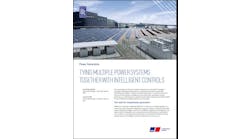What’s the cost of our always-on society? Turns out it’s pretty high when calculated in kilowatt-hours — or cups of coffee.
Always-on, in this case, refers to all of that idle equipment in our houses that keeps sucking up electricity even when we’re not using it. Think of the indicator lights on the dishwasher or garage door opener.
It’s easy for even the energy-conscientous to ignore always-on devices. I mean, they are small, right?
Not really, not when taken in aggregate, as explained in a new report, “Home Idle Load: Devices Wasting Huge Amounts of Electricity When Not in Active Use,” by the Natural Resources Defense Council.
We’ve been hearing about this “vampire” load for a long time. But this report is worth a look because of the good job NRDC does putting the waste in perspective and offering solutions.
Using data from smart meters and field measurements, a team that included NRDC, Home Energy Analytics and the Stanford Sustainable Systems Lab found that in already efficient California these inactive devices account for almost 23 percent of home electric use. Idle load uses up about 164 watts per household — what it takes to brew 234 cups of coffee every day for a year, a total of 85,000 cups.
And never mind the coffee, it takes about 50 large power plants (500 MW) to produce enough power to meet the always-on energy demand in the United States. It’s enough electricity to power all the homes in Arizona and Alabama for one year.
Based on studies going back a decade, it looks like the amount of energy we lose from idle load is on the rise.
“One reason for such high idle energy levels is that many previously purely mechanical devices have gone digital: Appliances like washers, dryers, and fridges now have displays, electronic controls, and increasingly even Internet connectivity, for example,” said Pierre Delforge, the report’s author and NRDC’s director of high-tech sector energy efficiency.
The report identifies about 65 different devices that eat up power while not in use — from the computer left on 24-hours-per-day to the furnace in standby mode.
Where can we really save energy? The biggest always-on culprits are consumer electronics, such as televisions, computers, printers, and game consoles (51 percent). Miscellaenous devices, like fish aquariums, use 34 percent. Interestingly, appliances that use a lot of energy in general, like heating and cooling systems, don’t demand a lot of idle power; they represent only 15 percent of always-on energy waste.
The idle energy costs per household, on average, for some common devices are:
- Water recirculation pump, up to $93
- Desktop computer, up to $49
- TV, up to $38
- Cable set-top box, up to $30
- Audio receiver/stereo, up to $22
- Printer, up to $11
- Furnace, up to $8
- Coffee maker, up to $6
- Dryer, up to $4
- GFCI outlets, $1 each
NRDC offers a guide to help households save energy by finding their always-on devices and then shutting them off, putting them on timers, plugging them into power strips or setting them on energy-saving mode.
Of course, if history serves right, trying to get consumers to save energy this way — even when portrayed in coffee value — isn’t going to make enough of a dent. If one-fifth of households take action and reduce their energy use by 20 percent, this yields only 4 percent average savings, the report said.
Truth is, we save energy when efficiency is baked into products. This means creating manufacturer appliance standards that address idle load.
“Technology exists to design electronics and equipment with very low idle loads, and it is already used in some products today. The problem is that too many devices fail to adopt this technology; designing for a low idle load is a lower priority than getting the product to market as quickly and as cheaply as possible.,” the report said.
By way of example, the report points out that Microsoft ships its Xbox One game console with the “instant on” mode disabled in Europe because of an EU standby standard. But in the U.S., where no such standard exist, the company ships the same product with the mode turned on.
Energy Star-like designations also would help, as would labels on appliances that specify how much energy the device uses in standby and what it costs the consumer.
The full NRDC report is available here.
Interested in more energy efficiency news. Follow us on Twitter @EfficiencyMkts





